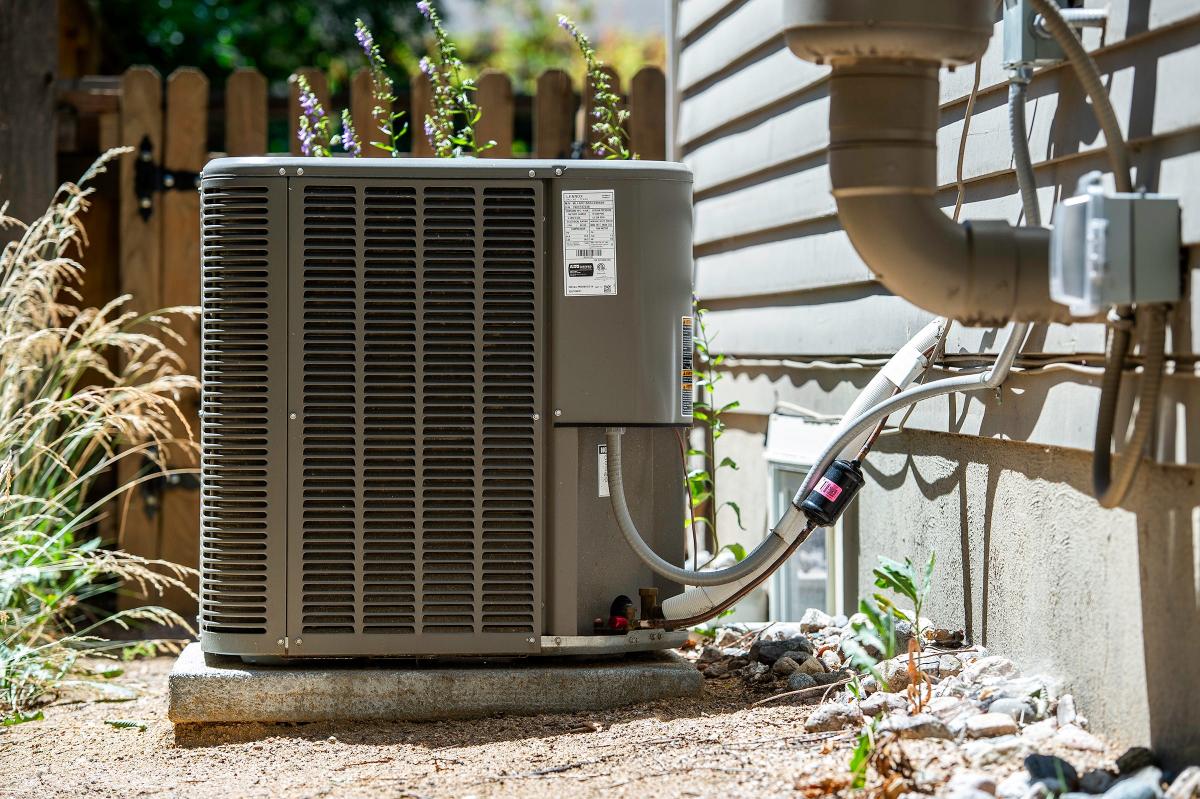On July 2, 1994, the community was shocked by news of a plane crash at Charlotte Douglas International Airport, as the day had started out so normally.
A computer animation of USAir Flight 1016 shows the departure from Columbia, South Carolina for the short trip to Charlotte. The sky was sunny as the DC-9 left Columbia.
“Suddenly the blue sky turned into thundering, big clouds. Lightning,” Paul Calvo told Channel 9’s Glenn Counts.
Paul Calvo and Phyllis, his wife of 30 years, were on a plane en route to Washington, DC for a fireworks show.
“The plane was rocking and rolling. And it looked horrible inside,” he said. “You couldn’t see out very well.”
There was a pop-up thunderstorm at the end of runway 18, right at Charlotte Douglas. The pilots tried to abort the landing, but a microburst made Flight 1016 sink like a rock.
“We’re definitely going to die”
“Heavy, heavy rain and wind. And we could see the smoke and we knew then that this was a very serious call,” said Eric Kelly, a retired Charlotte firefighter.
Kelly was one of the first on the scene.
“We had studied and prepared ourselves through training and learned a lot about plane crashes, but until that day I didn’t know exactly what I was going to face,” he said.
“I looked down the aisle and I could just see there was no cockpit,” Calvo said. “And when we got to a man’s house — luckily he wasn’t there — it caught fire and I said, ‘Oh my God.’ I was conscious, ‘We’re going to burn, burn. We’re definitely going to die.'”
The plane had broken into three pieces, much of it covered in jet fuel. After the crew extinguished the fire, Kelly’s team went into search and rescue mode.
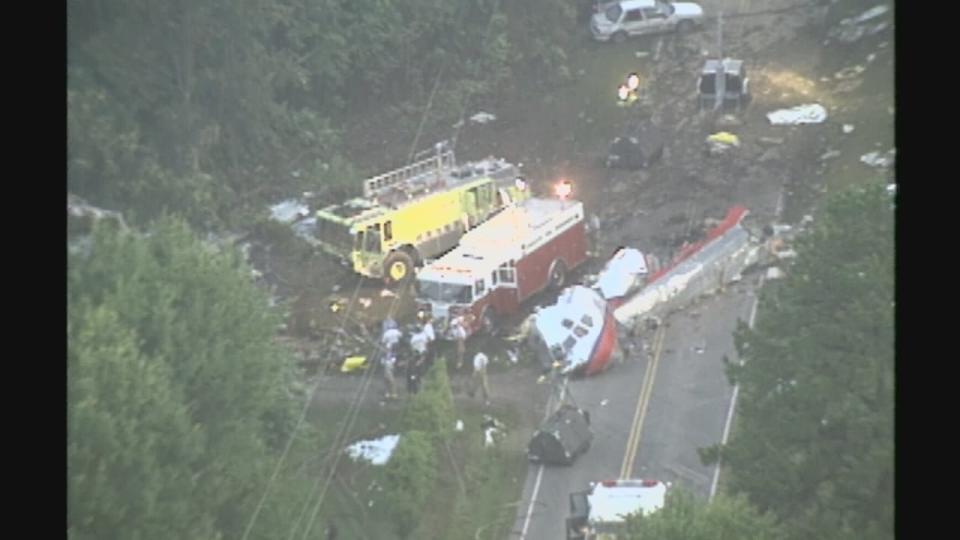
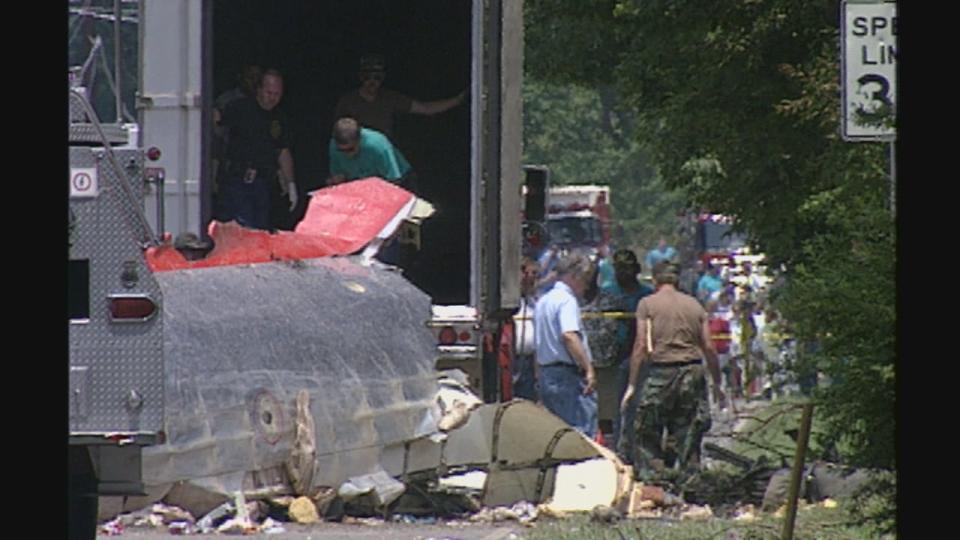

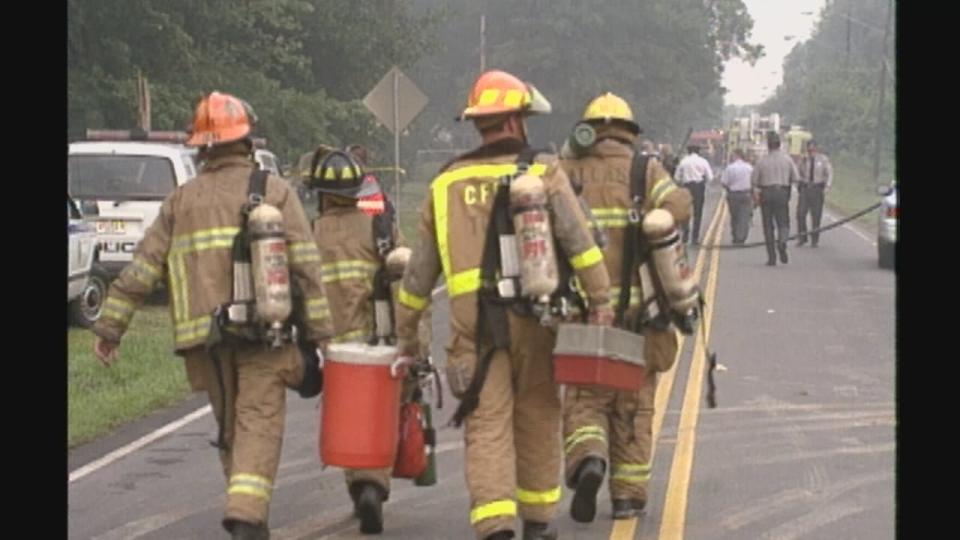

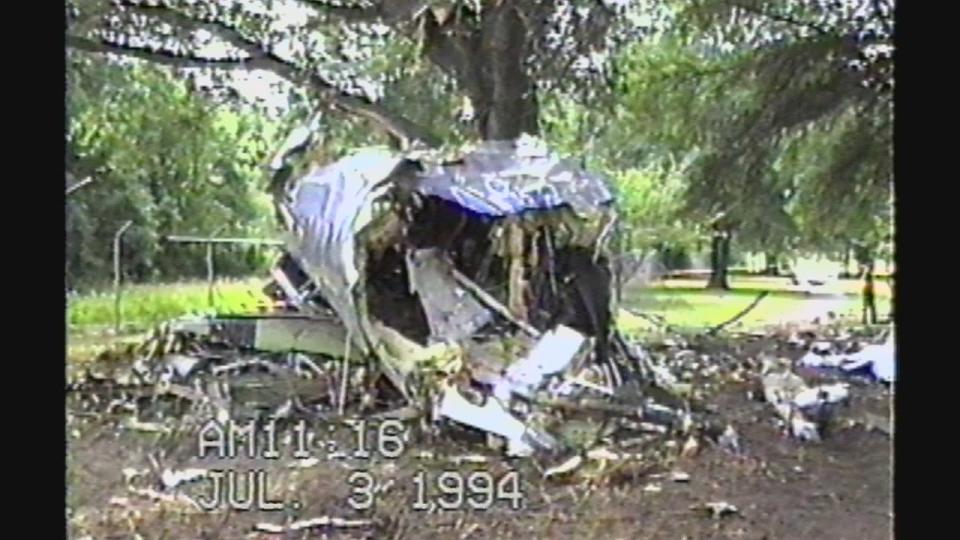

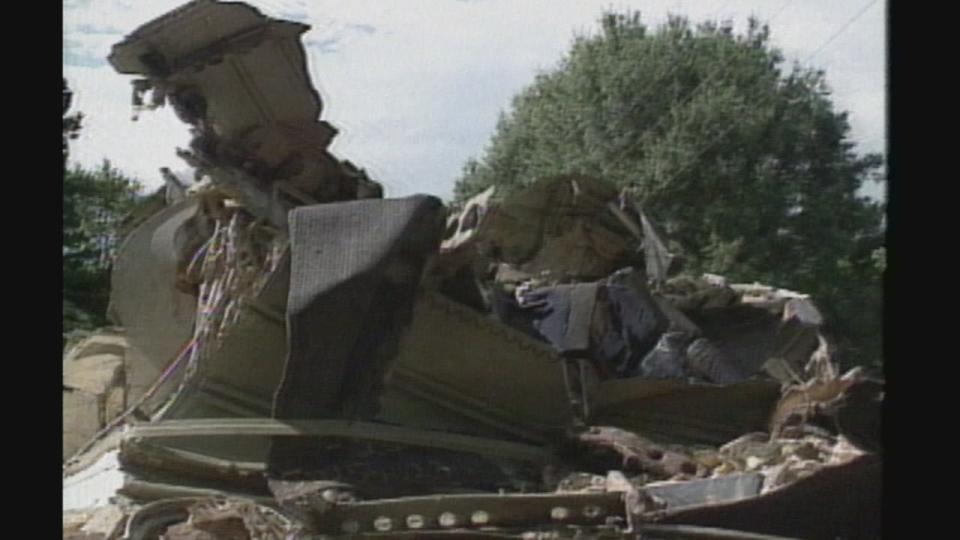

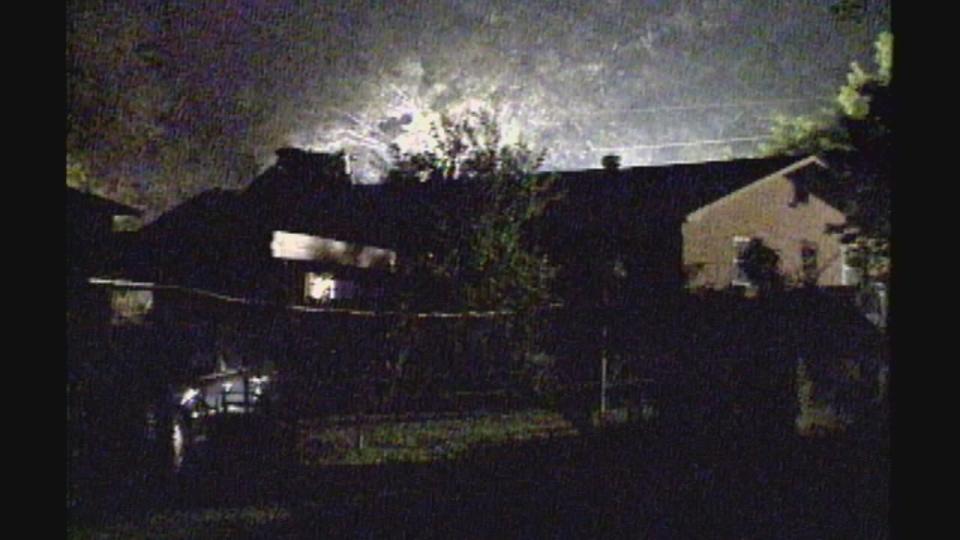

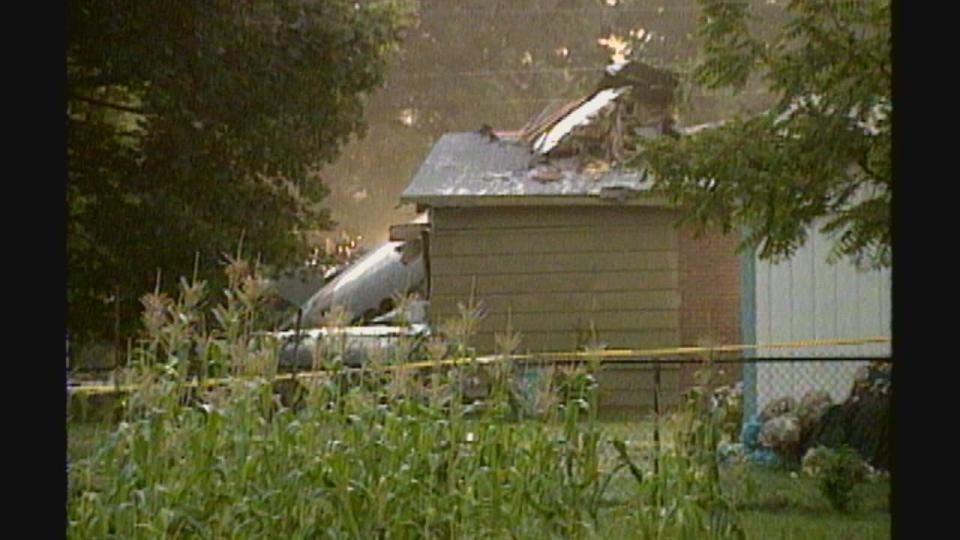

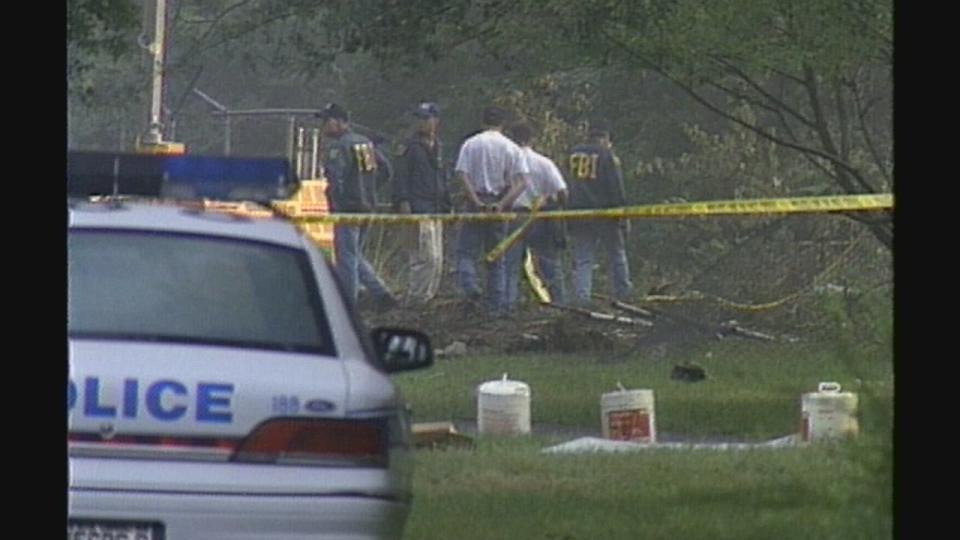

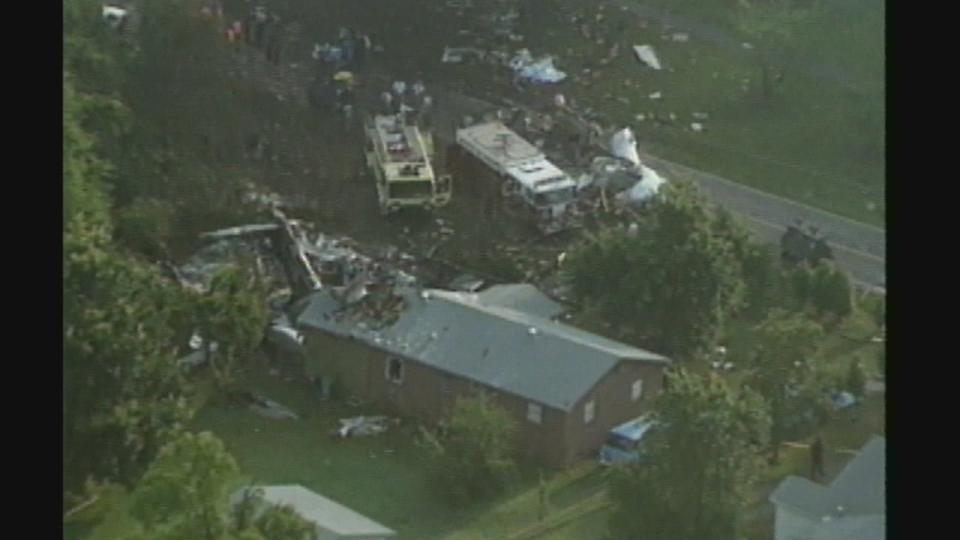

“And we met the pilot, the first officer and one of the chaperones walking down the street and they were devastated. They were in shock,” Kelly said. “I’m sure they couldn’t believe they had survived that crash.”
Meanwhile, Paul Calvo panicked.
“I kept calling for my wife, she was sitting by the window, with her seat pushed back,” he said.
He remembers never getting an answer.
With burns over most of his body, Calvo barely survived, waking up to the worst news imaginable.
“The doctors and my family were all around me and they were saying, ‘We buried your wife yesterday,’” Calvo said. “I was in a coma for eight days.”
His wife was one of the 37 people who died that day.
“In those eight days I met the Lord. I had some kind of out-of-body experience with the Lord and he wanted me to go back, and I begged him like a fool, ‘Please let me go with my wife Phyllis.’
“She was a dream come true for 30 years. I can’t say enough good things about her,” he added.
“Leave an impact on your life”
Calvo eventually recovered and devoted his life to teaching and helping others in his profession as a civil engineer. He also met Debbie and remarried.
“I’m married again,” Calvo said. “I’m probably the happiest man in the world.”
Eric Kelly feels the same way, but he says the tragic crash is never far away emotionally, even 30 years later.
“I then sought counseling through my pastor and got good counseling from him,” he said. “And over time you recover from those things, but it does leave an impact on your life.”
“I understand that I died on the asphalt,” Calvo said. “First responders, thank you for getting me through again. And then when I was in the trauma center, I was given blood transfusions and I died again. Thanks to the great hospital there, they saved me again.”
“The rewards are there. When you can save someone or help someone in their real need in life, that is the reward in the fire service,” Kelly said.
“My thoughts and prayers go out to those who were not as fortunate as I was,” Calvo said. “The families that were affected, the Lord is with you, He will always be by your side.”
30 year reunion
In a quiet corner of what is now a busy airport stands a solemn reminder that flying is not without risks.
Jason Sturkie and Sam Orlov are connected by the plane crash. Their reunion was 30 years in the making.
Together they visited the place where the plane crashed.
“We were in some dark clouds and all of a sudden I felt a drop, like in my stomach,” Sturkie said. “I don’t know how to explain it, except like you’re on a roller coaster.”
Sturkie was a passenger and Orlov was the first police officer on the scene. He played a key role in Sturkie’s survival.
Aerial video from that day shows the wreckage, with the fuselage broken into three pieces. The cockpit came to rest on Wallace Neel Road.
Sturkie’s mother and nephew died. Sturkie was one of only 20 people who survived.
“That second impact was so hard,” he said. “The first impact when the tail drug was one thing, but that second one when it hit…”
Flight 1016 Memorial
The men went to the airport’s new viewing platform to visit the Flight 1016 memorial, which has the original headstone and a section with a list of the victims.
“On the back is your mother’s name and the original plaque there, they moved it,” Orlov said.
Reporter Glenn Counts moved the interview to the Sullenburger Museum, home of the “Miracle on the Hudson” plane. It was the closest Sturkie had been to a passenger plane in 30 years. More memories came flooding back.
“And then I realized I was soaked in jet fuel and there was a fire just to my right,” he said. “I assume it was an engine because the engines on a DC-9 are in the back and I could still hear the engine running.”
He was trapped in the tail of the plane, buried under debris. He was trapped with burns and collapsed lungs. The first voice he heard was Sam Orlov’s.
“Once we made a hole, there was a void,” Orlov said. “I could stick my head in the void and shout and get some responses.”
“I groaned in response to that and he said, ‘I think I hear you, I’m going to get help,'” Sturkie said. “That was the first time I felt like there was hope.”
A groan was all Sturkie could manage because of his lungs. It took firefighters more than an hour to cut him out.
Orlov visited him every day in the hospital.
“When you experience an event like this, it’s really life-changing,” Orlov said. “I just wanted to know that the effort and the work that we all put in, is actually paying off.”
“I think for me it was part of my therapy,” he added.
‘Thank you for your courage’
During their reunion, Sturkie told Orlov how much he appreciated his reaction that day.
“Thank you for your courage, brother. Not many people would face something like that,” he said.
“I had to be where I was, when I was, and I would do it again without hesitation,” Orlov said.
When the accident happened, Sturkie was a student at USC. Now a lawyer, husband and father, he took time to reflect on the life he was blessed to live.
“There are just so many, so many people who lost their lives that day who would have been wonderful family members – husbands, wives, children, aunts and uncles – who could have contributed so much.”
After the crash of Flight 1016, all major airports were given Doppler radar to detect microbursts more quickly. Jason Sturkie said it was impossible to say how many lives were saved by the move.


